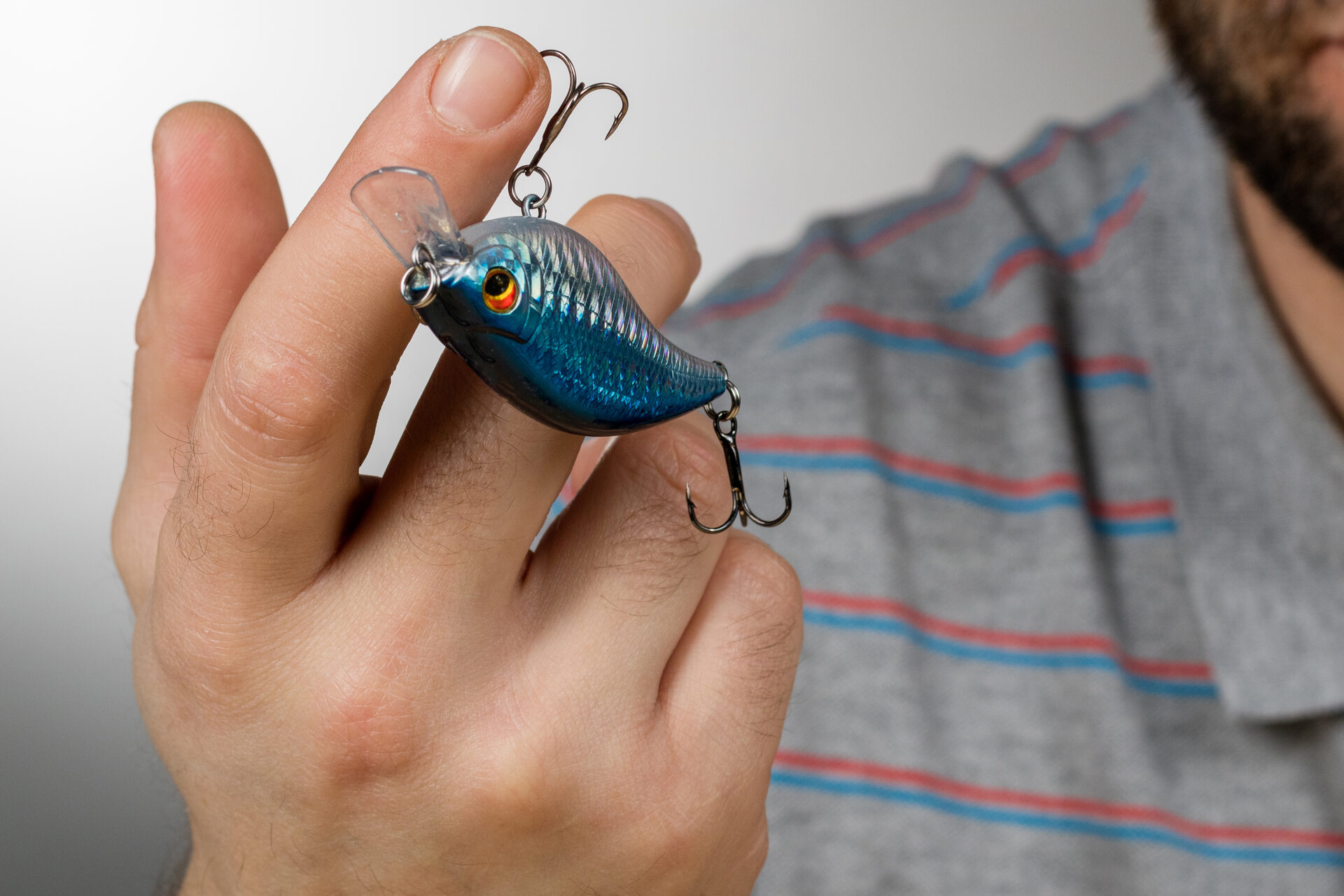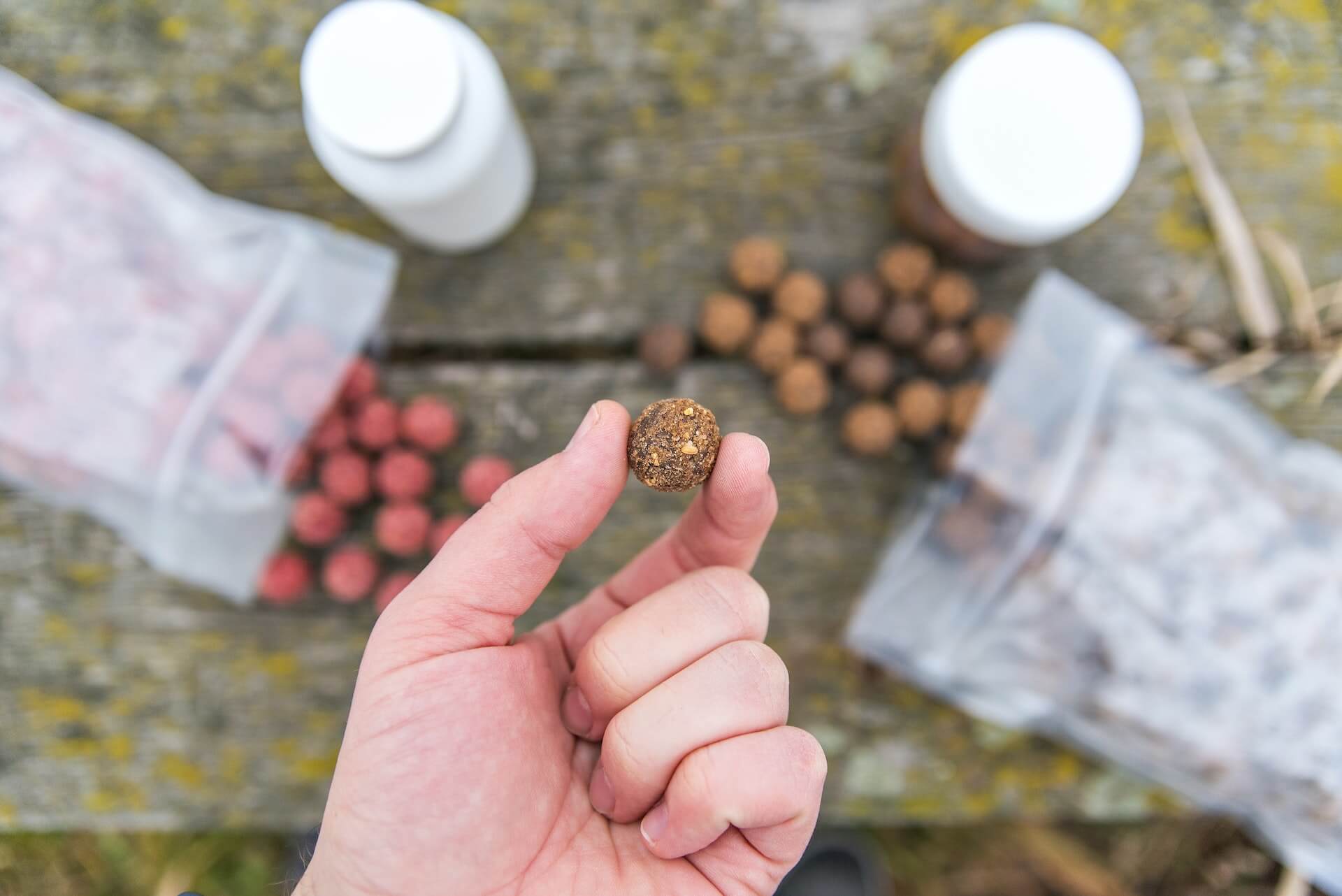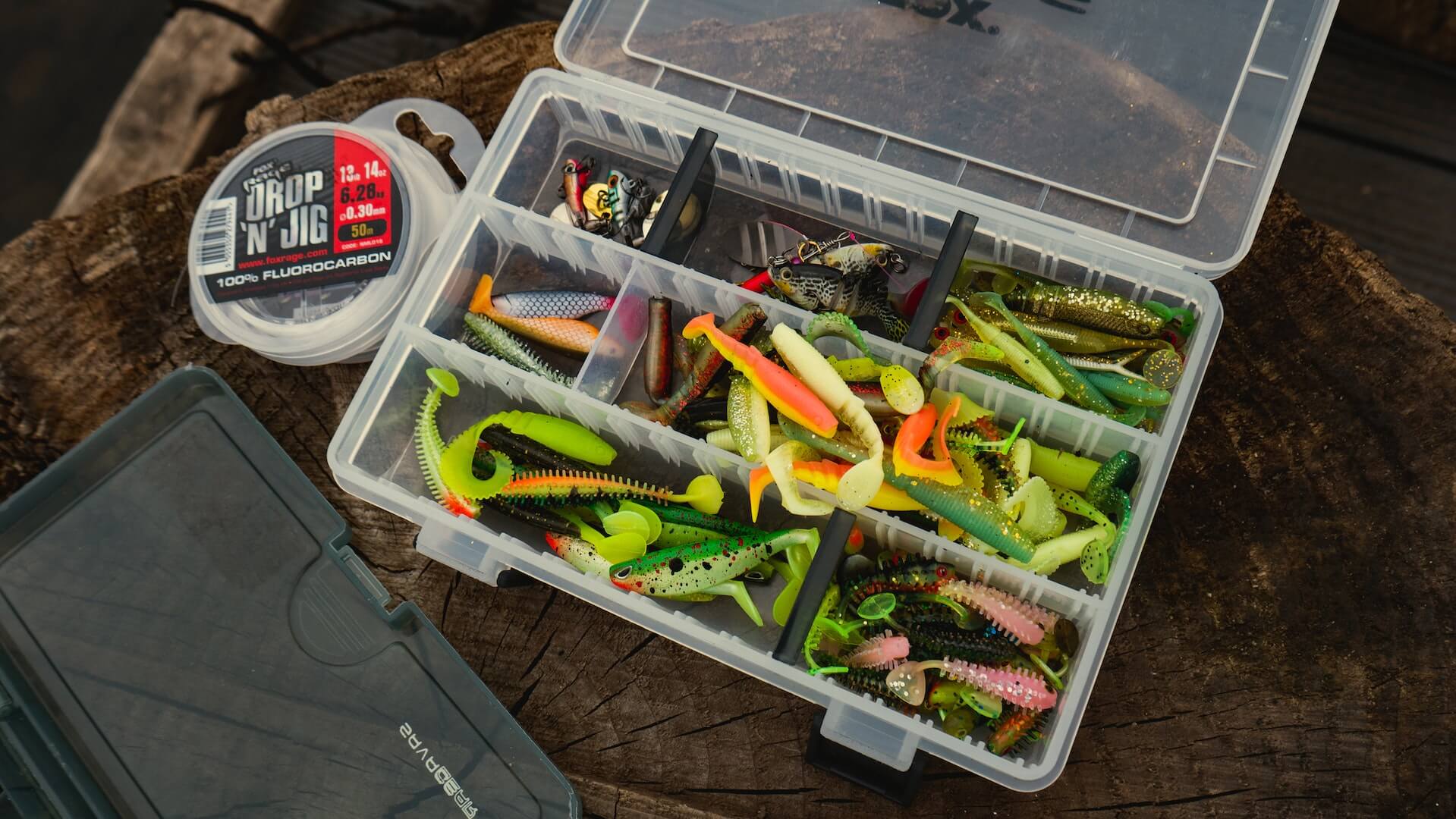Besides fishing rods, reels, lines, and hooks, fishing bait is one of the most important parts of fishing equipment – after all, you won’t be able to fish unless you have something to lure the fish with. But do you know how to make fish bait? Whether you plan on using an artificial or live lure or utilizing homemade bait, the following article contains all the answers you need.
The type of fish bait you can make depends on your preferences, as well as the specific fish species you wish to catch. Besides buying the finished product, you can always try to catch live bait on your own, make a soft plastic lure with the help of a suitable mold, or mix different food ingredients to attract different types of fish.
What Are Some Common Types of Fish Bait?
Fishing bait can be any item used for attracting and catching fish. Besides anglers’ skills and the style of fishing they are using, the type of bait used may impact the final results of catches. What type of bait should be used depends on many different factors, such as the specific fish species, fishing regulations in certain areas, and so on.
Traditionally, these baits were made from native fish food, such as worms, insects, or smaller bait fish. However, this is not the only type of fish bait used today. Besides natural fish food, anglers also use homemade baits (made from processed food), as well as artificial lures.
How to Choose the Right Fish Bait?
One of the most important things to consider when choosing the right fishing bait is the fish species you’re after. Remember that each species has its preferred prey – and you must know what it is before opting for a certain type of lure. Additionally, you must also check if there are some bait regulations in the area you want to fish in. For example, baitfish may be a prohibited type of lure in some lake areas.
It’s important to learn as much as you can about the specific feeding habits of a fish type you want to catch. Consider that they may have different feeding patterns during different seasons and water temperatures, for instance.

How to Make Fish Bait – Use the Food You Already Have at Home
One of the most economical ways of making fishing bait is using ingredients you already have in your home – although it will take a bit more effort on your side than simply going to the store and buying it. However, as with all other types of lures, you need to know what fish species you want to catch. Moreover, keep in mind that baits made from processed food can’t be the same for saltwater and freshwater species.
If you don’t know how to make your own fishing bait, you’ll be able to find numerous bait recipes online, and it may take some time to learn what works best for you. I’ve tried many of them and come to the conclusion of which homemade items bring me the most success.
Freshwater Fish Bait Recipe
For freshwater fishing, I like to use dough baits – they work excellent for species such as carp, catfish, bluegill, or crappie. The size of the dough I make depends on the size of the fish I want to catch. For example, I’ll make smaller dough baits for panfish but larger ones for carp. This type of bait is easy to make. You’ll need:
- Flour – 1 cup,
- Cornmeal – 1 cup,
- Water – 1.5 cups,
- Garlic powder – 1 teaspoon,
- Sugar – 1 teaspoon,
- Molasses – 1 cup.
Mix the cornmeal, flour, sugar, and garlic powder, and add ¾ cup of water. Stir this mixture until it gets a doughy texture, and make dough balls. Boil the rest of the water and molasses, place dough balls into the mixture, and let them boil for three minutes. Remove them and let them cool down – and that is it! All that is left to do is put the bait on the hook and start fishing.
Saltwater Fish Bait Recipe
While homemade chum is not the same as dough bait, I found it useful for catching live saltwater baitfish in my cast net. However, before sprinkling the chum mixture into the water, keep in mind that it’s necessary to research fishing regulations for the area you’re fishing in and see what techniques of catching baitfish are permissible.
As for making chum mixture, you’ll need:
- Sardines – 1 can,
- Instant mashed potatoes – 1 box,
- Menhaden oil – 1 or 2 teaspoons.
All you need to do is mix these ingredients (if you need to modify the consistency, add a bit of water, but make sure it’s saltwater) – and sprinkle the mixture where you want to.
Other Types of Homemade Baits That May Do the Trick
If you’re the type of person who doesn’t make any food at home, you probably won’t be too eager to waste your time making the perfect bait mixture. If that’s the case, feel free to use chicken, bread, fish, or cheese to lure the fish – by simply attaching their bits to the hook. You can also use cereal flakes – crush them, add a bit of water, and make tiny balls. You can also thread kernels onto the hook, which can be especially efficient if you wish to catch small-mouthed fish (such as bream).
Smelly bait is known to attract certain types of fish (such as catfish), so many people opt for using chicken liver as a lure. However, I personally prefer turkey liver – not only does their texture make them a lot easier to work with, but I found that they, in fact, lure more fish than baits made from chicken liver.

Use Batis Made From Native Prays
Natural baits are a popular choice for fishing, as they can be highly effective in attracting fish. They are made from organic materials such as worms, insects, fish, and crustaceans. These baits can be found in various environments, such as ponds, lakes, streams, and the ocean. Using natural bait is considered one of the most traditional and popular methods of fishing, as it mimics the natural food sources of the fish.
After you find these natural baits, it’s important to handle them with care and use them fresh to ensure maximum effectiveness. Additionally, when learning how to make fishing baits and how to use them, it’s important to keep in mind the type of fish you’re trying to catch and the environment in which you’re fishing. Different types of natural baits may be more effective for different fish species and in different types of water. Check the table below for some examples:
| Bait | Target fish | How to bait? |
|---|---|---|
| Grasshoppers or crickets | Freshwater fish (especially bream) | Hook them through the back. The bait should be suspended a few feet below the fishing float. |
| Aquatic invertebrates (sand crabs, grass shrimp, leeches, sardine snails, and so on) | Sauger, panfish, trout, sunfish, and walleye | Hook them through the back. The bait should be suspended a few feet below the fishing float. |
| Shrimp | Catfish | Wrap the shrimp with sewing thread to keep it from flying off the hook before casting. |
| Crawfish | Excellent for many different types of fish, including walleye, large trout, catfish, and bass | Remove the head and string the body on the hook by putting it underneath the tail and impaling it. |
Test Your Luck With Artificial Baits
The third basic type of fishing bait is artificial baits – and they are my favorite kind (it’s only natural because fly fishing is my favorite style). First of all, artificial baits allow you to cast further than live baits, and they are much less messy to work with, to be honest. Additionally, if you plan on catching and releasing the fish, it’s a much better option since fish most likely won’t swallow the entire hook. In the end, they allow you to target a specific fish species more accurately and are very interchangeable.
That being said, keep in mind that this bait type does have some downsides. For starters, they tend to be more expensive than live bait. Moreover, you need to constantly move them in order to lure the fish, and using some specific types of lures demands more experience and skill than an average beginner has. Additionally, the colder the water is, the less effective they become.
Different Types of Lures
If used appropriately, artificial baits can bring you a lot of success. They work equally well in saltwater and freshwater and may be used for catching a wide range of different fish species. Of course, there are numerous sorts of fishing lures you can choose from. Among the most popular are:
- Plugs – also known as crankbaits, plugs are lures made from hard (hollow or solid) pieces of plastic, with a size and color that resembles fish prey. They usually have a so-called lip, a small piece of metal or plastic attached to the front. They have up to three treble hooks and can hover, dive, sink, or float, depending on their design.
- Jigs – these lures are made with a hook on one side and a weighted head on the other. They are one of the most popular types of artificial baits and usually feature a plastic grub or feather skirt. You can use them to lure bottom feeders since they sink easily (due to their weight). They are one of the best bluefish baits.
- Spinnerbait – these artificial baits move through the water horizontally. On the one side, they have skirted hooks, while one or even more metal blades are located on the other. The whirling of the blades produces color reflection and vibration that closely resembles bait species.
- Spoons – a lure with a concave shape that makes them wobble and shine. The bigger their curve is, the wider the wobble will be. They are made to resemble injured baitfish.
- Flies – they have a skirt and a single hook and are most commonly used in fly fishing. They are made to resemble crustaceans, insects, and other prey. However, fly tying can be very complicated.
- Soft plastics – they are rubbery and flexible and able to resemble many different types of aquatic critters.
How to Make an Artificial Bait at Home?
While other types of lures can be complicated to make on your own, creating soft plastic baits from scratch can be a very simple process – all you need is a mold for a soft plastic lure you want to make, plastic resin, and color.
Place a mold on a heat-resistance surface (such as an old baking pan). To remove the lure from the mold more easily, spray it with cooking spray. Use a measuring cup that can be safely utilized in a microwave, and fill it with plastic resin – make it no more than half-full. Microwave it for thirty seconds. Repeat the process several times – until the plastic becomes clear.
Once you remove it from the microwave, add a few drops of your chosen color. You can add scents, flavors, and glitter if you want – just make sure they do not contain metal. Return it to the microwave and heat it on high for another thirty seconds to incorporate all the ingredients properly.
Slowly fill the mold with the mixture and wait for around fifteen minutes for the plastic to cool off. Then, pop the artificial bait out and leave it to cool overnight. If you see any excess plastic in the morning, feel free to trim it away. That is it! All that is left to do now is to learn how to make a fish hook (or simply buy some of the best hook types) – and you are good to go.

Choose Your Preferred Fishing Bait – And Get Down to Business
Fishing is an activity you are supposed to enjoy, whether you’re an experienced angler or a beginner. Therefore, it’s important to use the type of bait you’re most comfortable with. Once you’ve made your choice, your next step should be gathering the baits – whether it means buying or finding them or learning how to make a fishing bait on your own from scratch. As with different types of fishing techniques – don’t be afraid to experiment! You won’t be able to find out what type of bait works the best for you unless you try them all.







